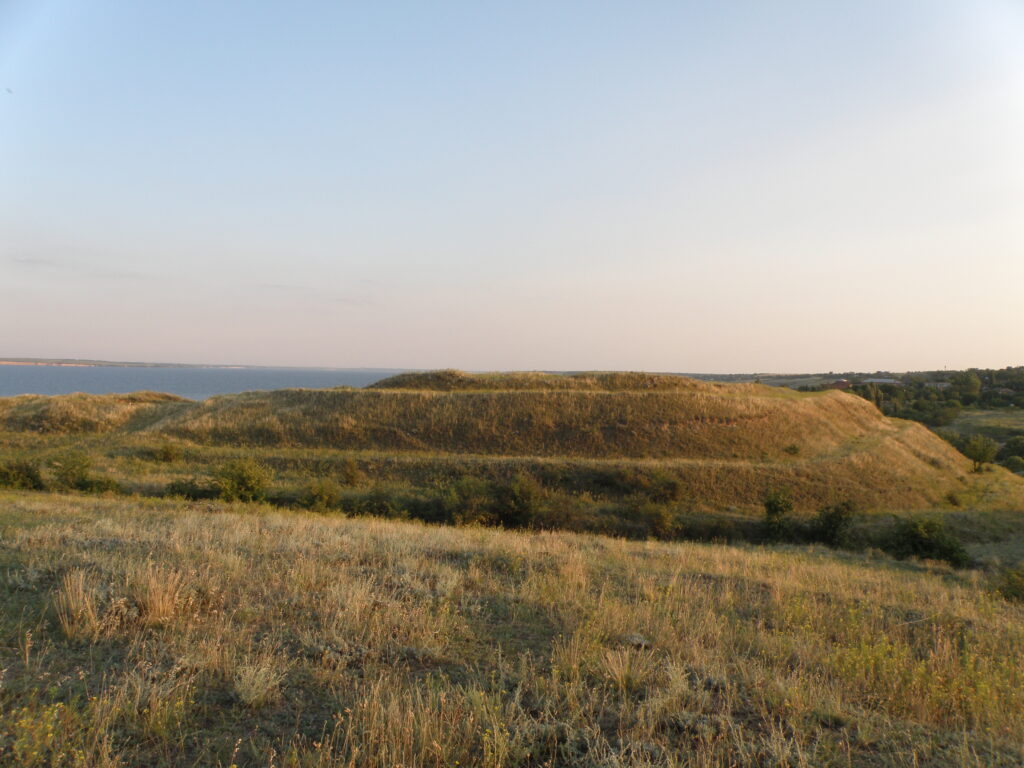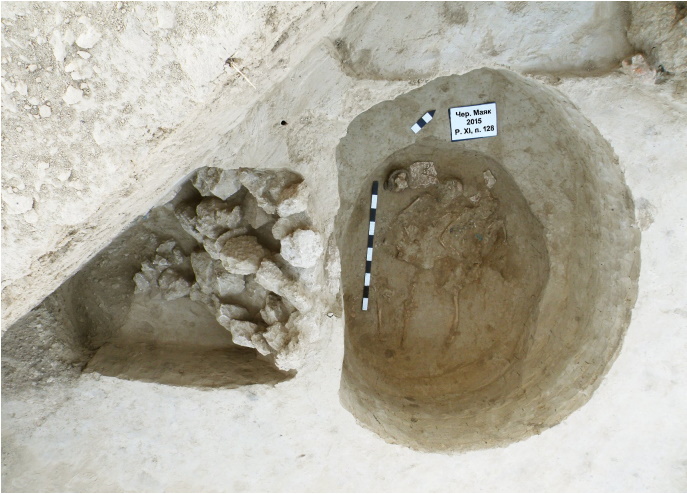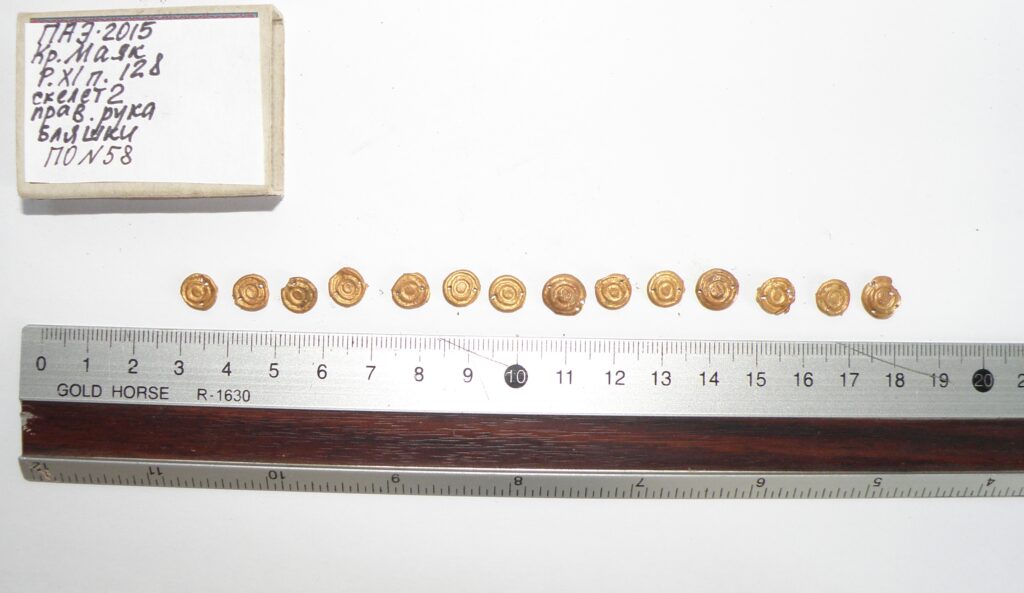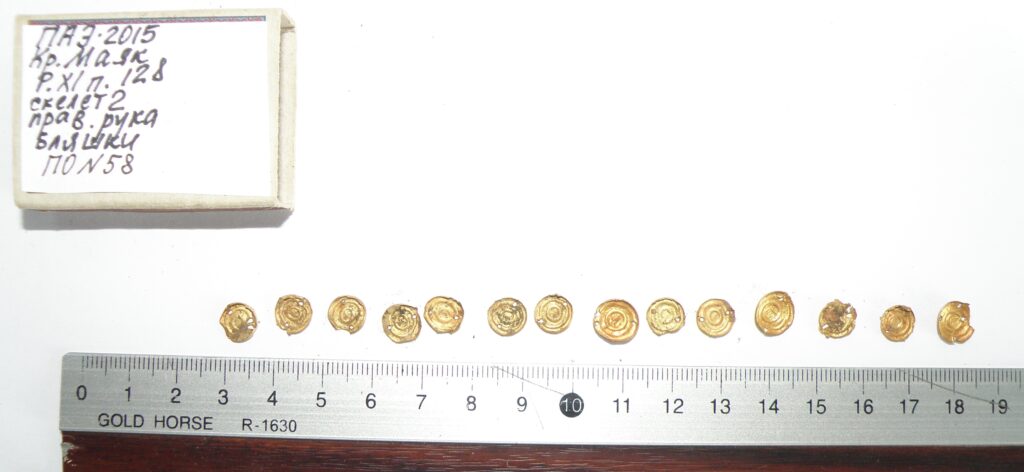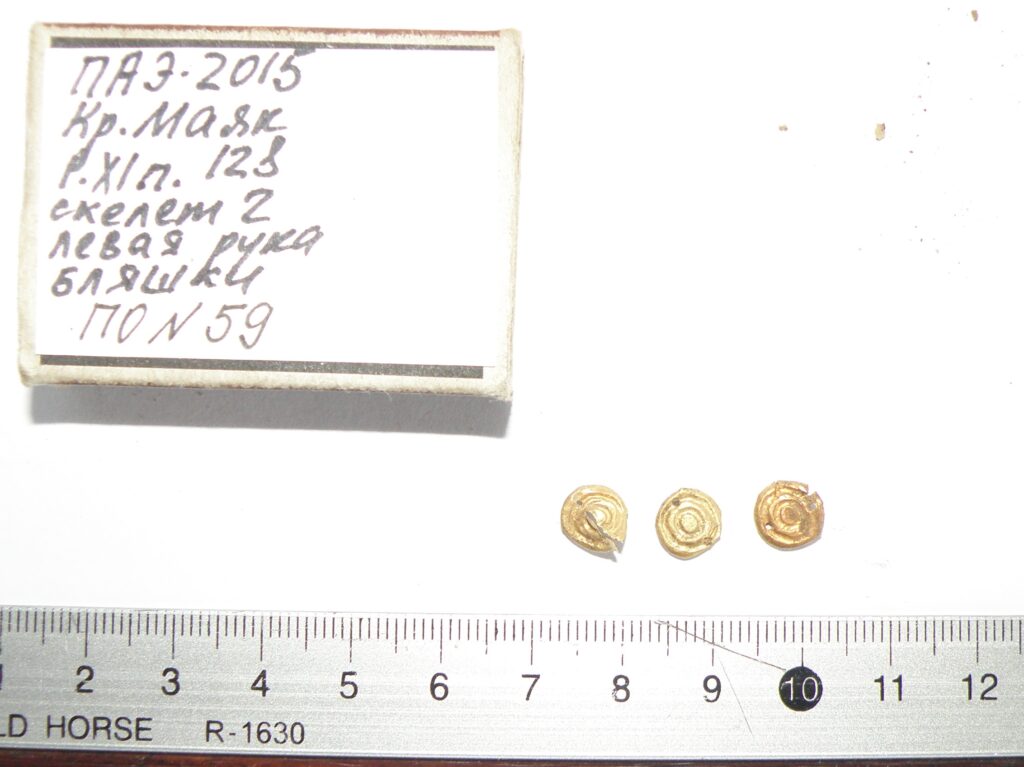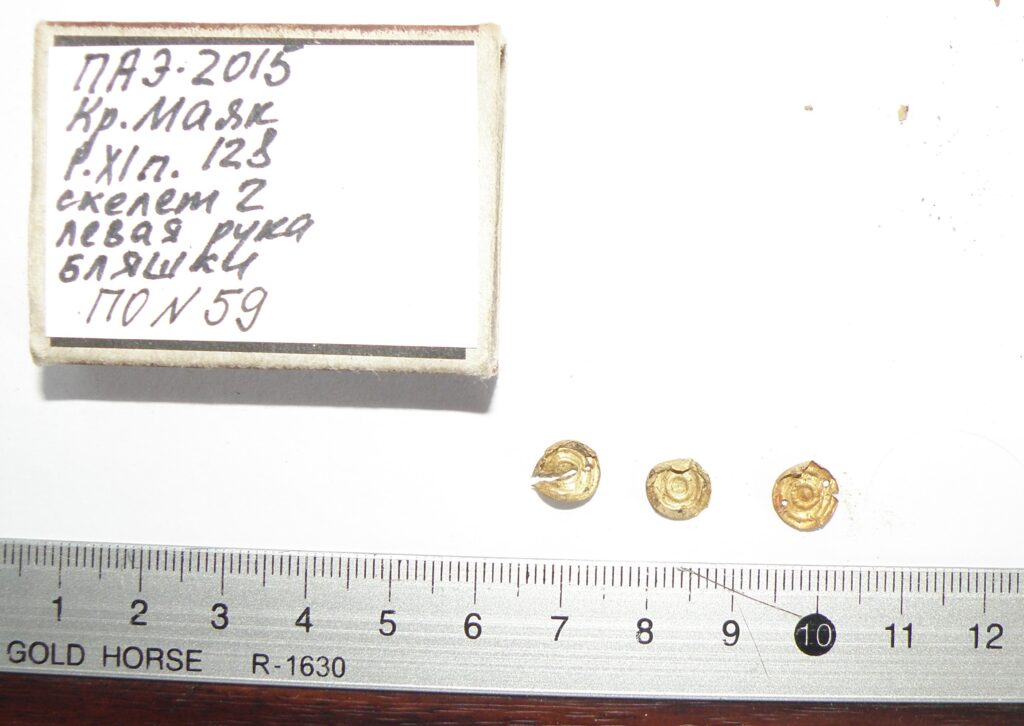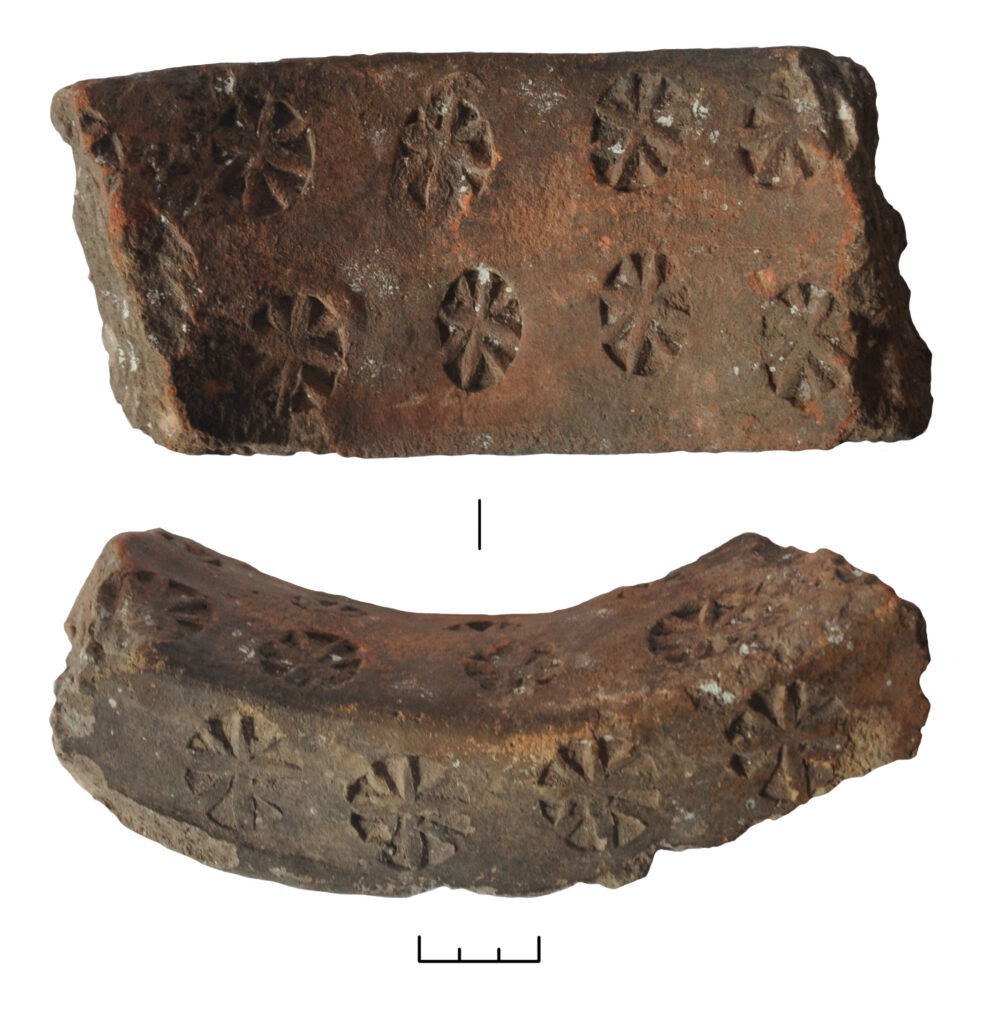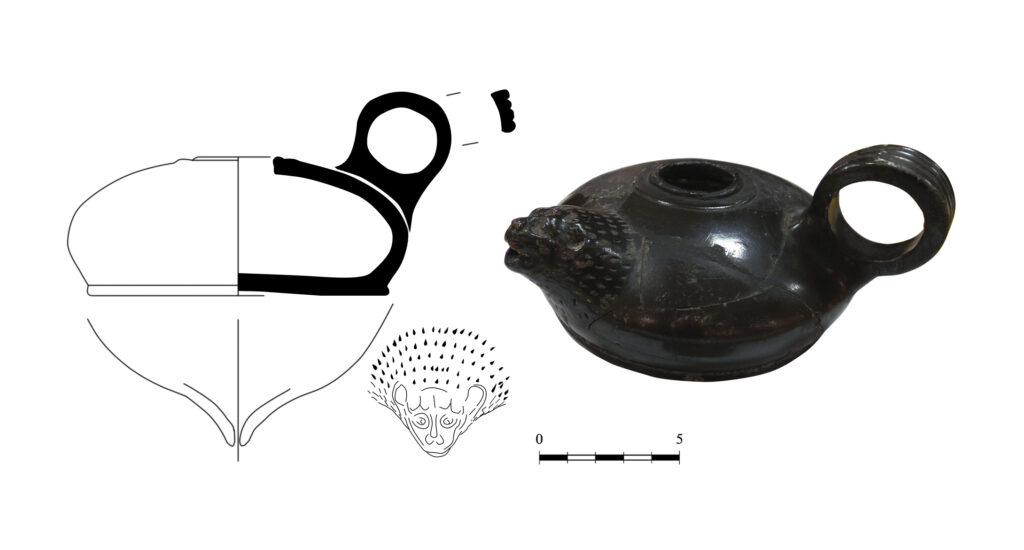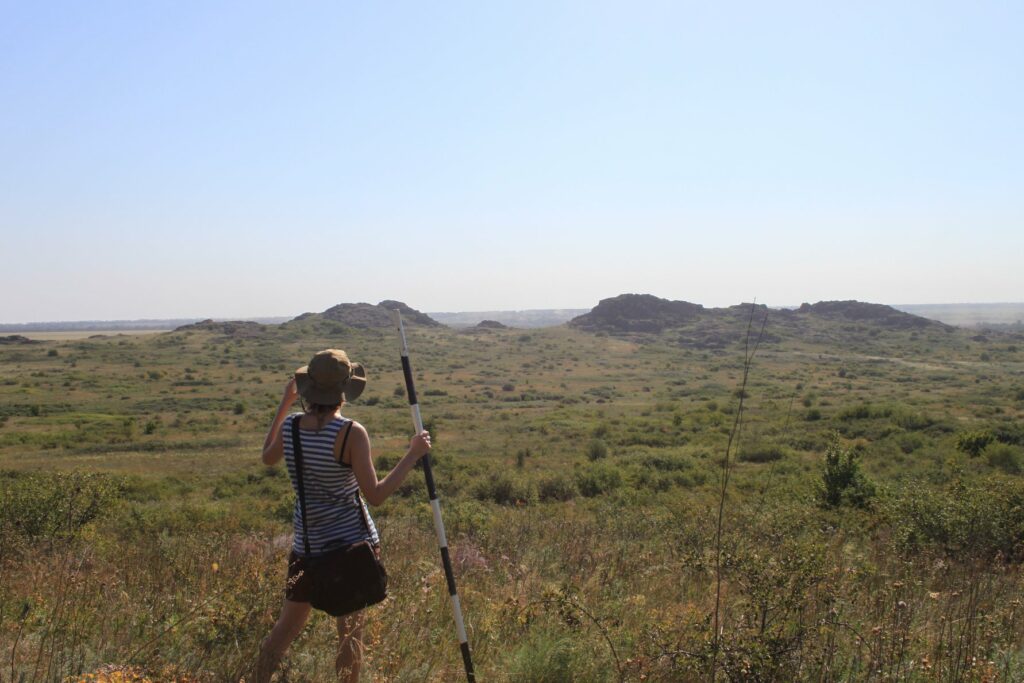The city of Kherson and its museums experienced a sad fate as one of the cities occupied by Russian forces in the very beginning of the war. As a result, cultural heritage stored in the museums of Kherson could not be evacuated and fell into the hands of the invaders. After the recapture of the city, Ukrainian researchers found only empty shelves in the museums where formerly rich collections had been exhibited. The museums were looted by retreating Russian troops and their collaborators. Our scholar Olena Dzneladze (Fig. 1) – researcher at the Department for Early Iron Age Archaeology at the Institute of Archaeology of National Academy of Sciences of Ukraine – investigates the looted collections of the Kherson Museum of Local History and restores the information about stolen objects that we may never see again from the excavation reports and archive records.
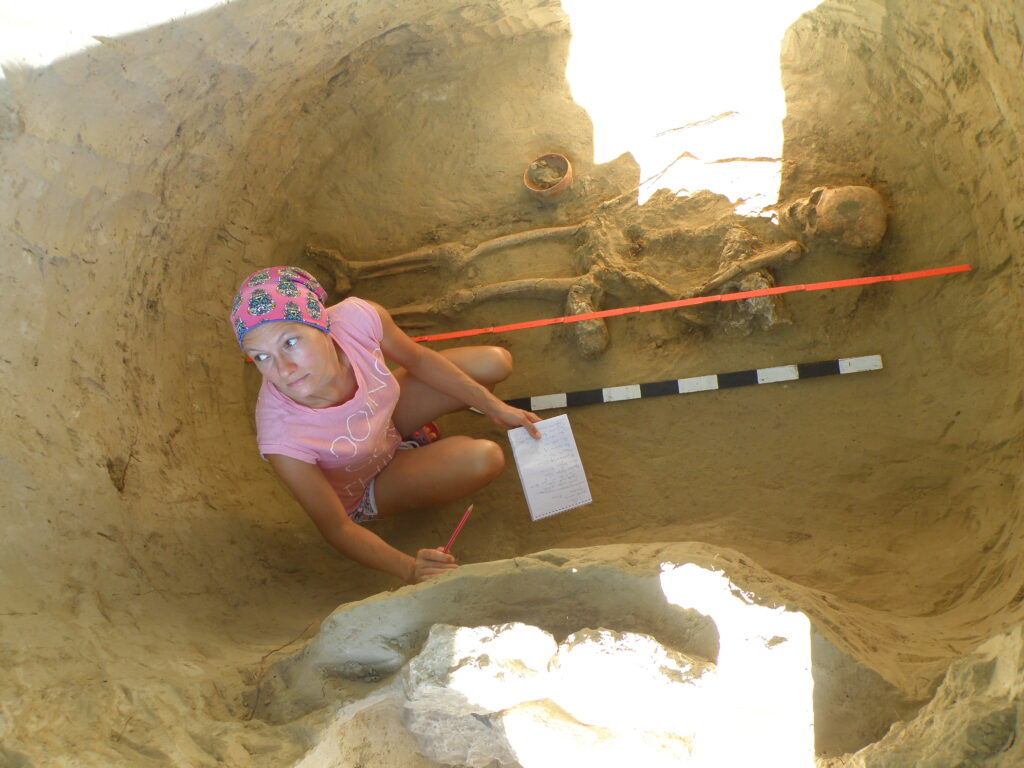
One of the new exhibits of the Golden Treasury of the Kherson Regional Museum of Local Lore was gold plaques from the sleeve decoration of the Late Scythian female Burial 128 (skeleton 2) of the Chervony Mayak necropolis (Fig. 2).
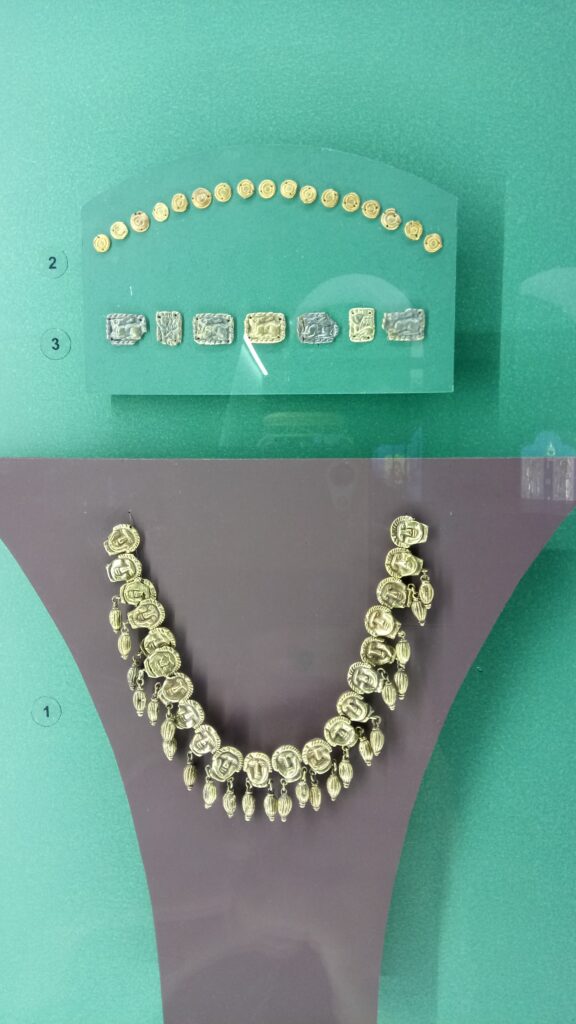
The Chervony Mayak archaeological complex is a Late Scythian site, consisting of a large hillfort, a settlement outside the fortified area and a burial ground, which is one of the outstanding archaeological monuments of Ukraine (Fig. 3).
The burial was investigated by the Late Scythian archaeological expedition of the Institute of Archaeology of the National Academy of Sciences of Ukraine and the Regional Inspectorate for the Protection of Historical and Cultural Heritage of the Kherson Region in 2015.
Burial 128 was a deep crypt burial which is a common burial rite of the Late Scythian period. The remains of four skeletons – two adult women (skeletons 1 and 2) and two infants (only milk teeth and pelvic bone fragments preserved) – were found on the tomb base at a depth of 271 cm from the local zero point.
The grave goods included a handmade bowl, located above the skull of skeleton 1 with a leg joint fragment of sheep or goat – a probable farewell meal – inside the bowl. Under and slightly above the skulls of skeletons 1 and 2 two flat, rectangular limestone slabs have been documented (Fig. 4).
Skeleton 1 was laid face down with its head oriented to the W-NW and turned toward the entrance of the chamber. The right hand of the buried individuum rested on the pelvis, the left hand was placed under the shoulder and arm of skeleton 2. An arrowhead was documented on the skull, as well as another one on the right side of the right forearm. The personal adornment included several large beads on the neck and on the left hand as well as a fibula on the chest of the buried person. Several beads and an iron object were also found in the area of the right elbow of skeleton 1.
The right part of skeleton 2 lay on skeleton 1. Its right arm was bent at the elbow and rested on the pelvis covering the left arm of skeleton 1. The left arm was stretched along the body. The forearm was disturbed by an animal burrow. Skeleton 2 of burial 128 had rich grave goods: a long necklace with different types of beads and a large bead in the center was documented on the neck and chest of the buried individuum. In the middle chest area there was a fragment of a bronze mirror broken into two parts. Numerous carnelian beads were scattered on the ribs. On a finger of the right hand there was an iron ring with a bronze plate. The collar, hem, and sleeves of the garment were covered with seed beads. The ends of the sleeves were covered with gold plaques. Some pieces of wood – possible arrow shafts – were also found on the chest of skeleton 2.
The grave goods allow us to date this burial to the 1st century CE.
The Golden Treasury of the Kherson museum exhibited golden plaques originally sewn to the sleeve of the clothes of the second woman interred in the burial 128. The plaques were made of gold foil. They were ornamented with two relief circles on the edge and inner side and a small bulge in the center. Each had two holes for sewing. A total of 14 plaques were documented at the right hand (Figs. 5–6) and three at the left hand of skeleton 2 (Figs. 7–8).
All the plaques were stolen by Russian troops during the robbery of the museum’s Golden Treasury in November 2022.
Olena Dzneladze
